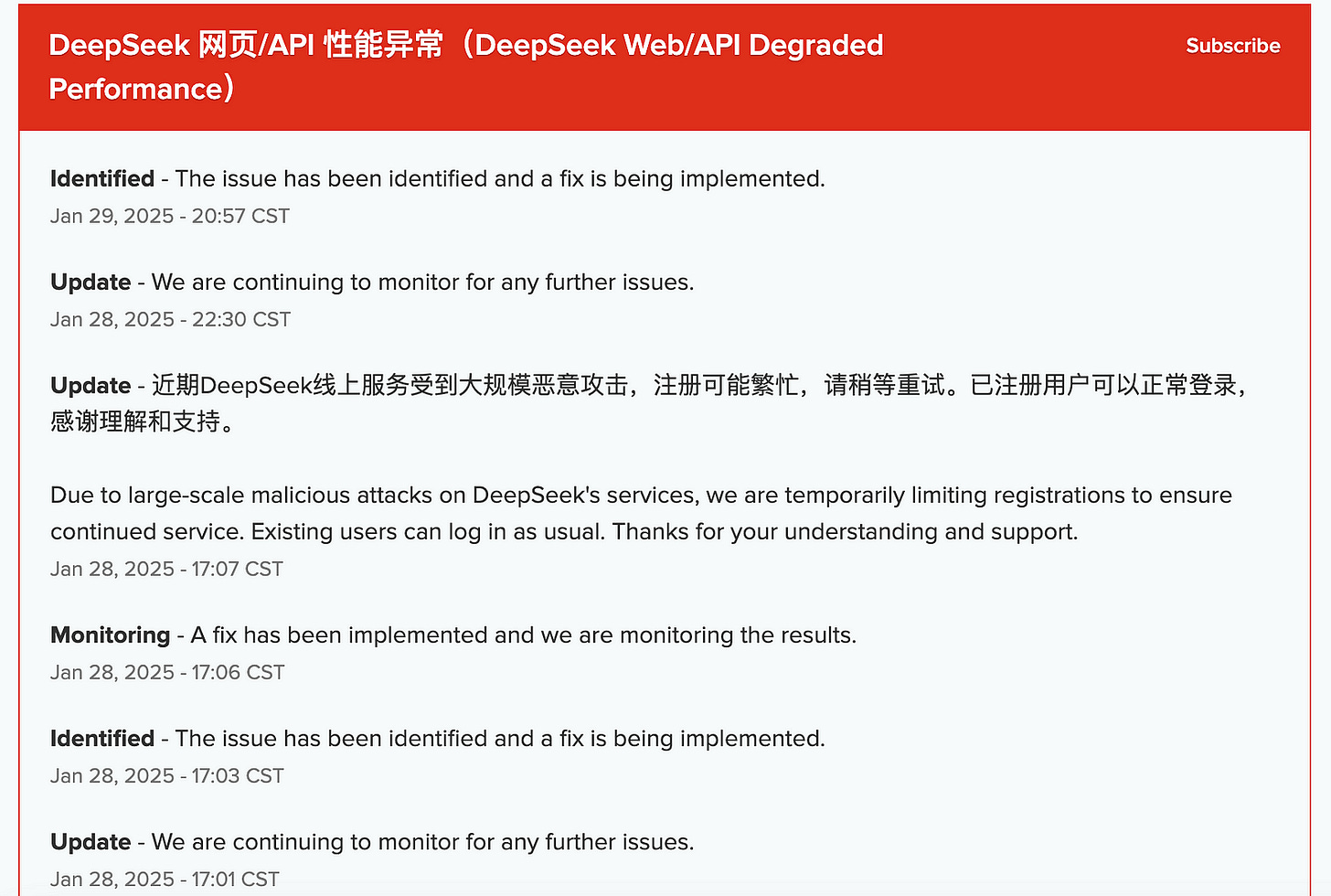The Breakdown Of DeepSeek Was An Unusual Nightmare
I scrambled to find a backup for my web app — and learned a crucial lesson about LLMs
Did you hear the news about the stock market crashing on Monday due to DeepSeek’s release?
Is your wallet bleeding?
Well, for me, that’s not the only thing taking a hit.
My recent launch of Quick Viral Notes faced an unexpected disaster.
The Idea Behind Quick Viral Notes
For some time, I had been experimenting with the idea of generating notes from my own articles. With the right note-writing templates, I believed AI could help bring this vision to life.
My approach was simple: feed the article content into an AI model and let it generate structured notes. After a few iterations, I landed on a working version.
My choice of DeepSeek was rather random — I liked the quality of its generated notes, it offered an 8000-token capacity, and it was cost effectiveness. OpenAI’s initial results weren’t as impressive, and I didn’t want to spend too much time tweaking prompts when DeepSeek was already delivering solid results.
To my surprise, after launching the product, many people started using it and provided positive feedback.
To me, the note generator isn’t just about creating so-called viral content.
It’s about uncovering the parts of my own post that truly resonate with me. When it surfaces hidden beliefs or questions I once glimpsed and then forgot, I feel a genuine sense of joy in rediscovering them. It’s not about the format—I always make small tweaks to make each note feel more like me—but the essence remains the same.
The Unexpected Shutdown
Good things don’t last forever.
Around midday on Monday, I started receiving bug reports from users. The note generation feature had stopped working.
Confused, I double-checked everything. Locally, it was not returning any response, and testing it via cURL confirmed the issue. Then, I checked DeepSeek’s official website — it was down.

Go figure. Thanks a lot! Now I had to scramble for an alternative AI provider.
The Nightmare of Switching to GPT
Since DeepSeek had been producing high-quality notes, I assumed switching to GPT would be straightforward.
Big mistake.
I spent the entire evening trying to make GPT-3.5-turbo work.
Simple Adjustments
I started with the same prompt, but the results were underwhelming. Adjusting parameters such as:
Temperature — Still not creative.
Max Tokens — No improvement.
Top-P, Top-K, Frequency Penalty, Presence Penalty — No creativity boost at all.
Tinkering with the prompt led to missed requirements. Adding more instructions only made it worse. Changing the system prompt? No help.
I had always been cautious about GPT’s hallucination and context window issues, but I didn’t expect API behavior to be so different from UI interactions.
More Advanced Tweaks
Because I needed to send entire article content and detailed note requirements to the API, my requests were quite long. Given GPT-3.5-turbo’s 4096-token limit, I wondered if my inputs were too lengthy.
I considered breaking the task into smaller chunks — extracting key ideas first and then generating notes — but multiple API calls resulted in the same bloated prompt issue.
Even worse, GPT started exhibiting “lazy” behavior over time:
Generating increasingly short notes.
Using the same emoji for every note.
Producing generic, repetitive results with minimal variance.
To counter this, I introduced a list of system roles and diverse formatting templates, each randomly selected, but nothing worked.
Yes, I knew GPT models tended to degrade over extended use, but I didn’t expect it to be this bad.
Eventually, I had to settle for a barely functional version.
But of course, the users (and myself), who have already seen the most impressive version are not satisfied by the outcome.
What I Most Appreciate DeepSeek
With DeepSeek, I didn’t have to go through any of these drama. It consistently generated impressive notes without extensive tweaking.
Many compare DeepSeek and GPT, arguing that DeepSeek is better for reasoning and precision, while GPT excels in creativity.
I disagree.
DeepSeek delivers not just precise results but also more sensible creative outputs.
Creativity isn’t about fancy wording — it’s about building from the ground truth. My experience with GPT has shown that it struggles with this fundamental principle.
Previously, I believed GPT was the best AI option. But this incident made me realize I might have been wrong. DeepSeek’s level of self-learning and reasoning left a lasting impression on me, and I’ll be using it far more in the future.
Lessons Learned
DeepSeek isn’t perfect — its downtime was a critical reminder of the need for backup plans. But this incident also taught me a bigger lesson:
AI won’t be a monopoly game in the future.
If I was urgently searching for alternatives while DeepSeek was down, many others likely were, too. This suggests that while certain AI models may outperform others at times, users will always seek reliable options, ensuring competition in the AI landscape.
A bold prediction from my personal experience?
The future of AI will be a multi-giants game, with several major LLMs competing for market dominance — always.
I kept checking my project, hoping DeepSeek would come back online, and thankfully, it finally did. I just hope it stays reliable — otherwise, I’ll be stuck dealing with a subpar fallback again!
P.S. Why didn’t I try using Claude or GPT-4o as a backup plan?
The results still weren’t as impressive as DeepSeek.
The cost of generating notes per request exceeded $0.50 — is that really sustainable for users? I doubt it.











Since you've been hosting your application yourself, there's one option you have to keep using Deepseek: running it yourself.
It works like a charm on my 2020 M1 MacBook Pro for everything text generation related, which means you don't need an expensive GPU instance.
Have you thought about trying out other models? Together AI has a list of other ones: https://www.together.ai/models